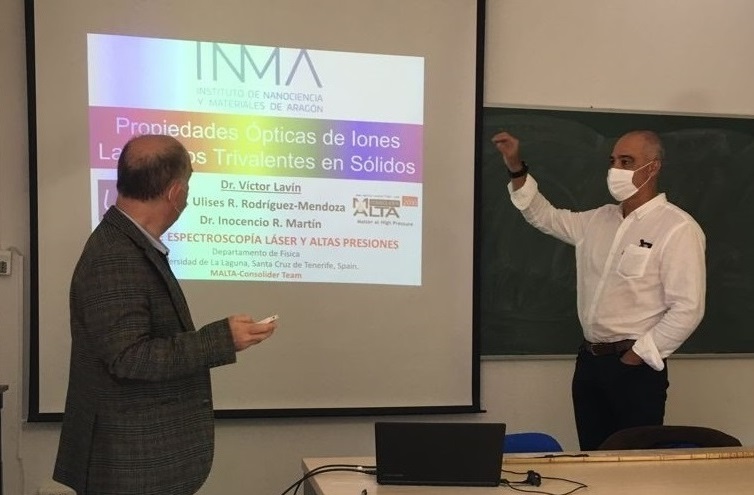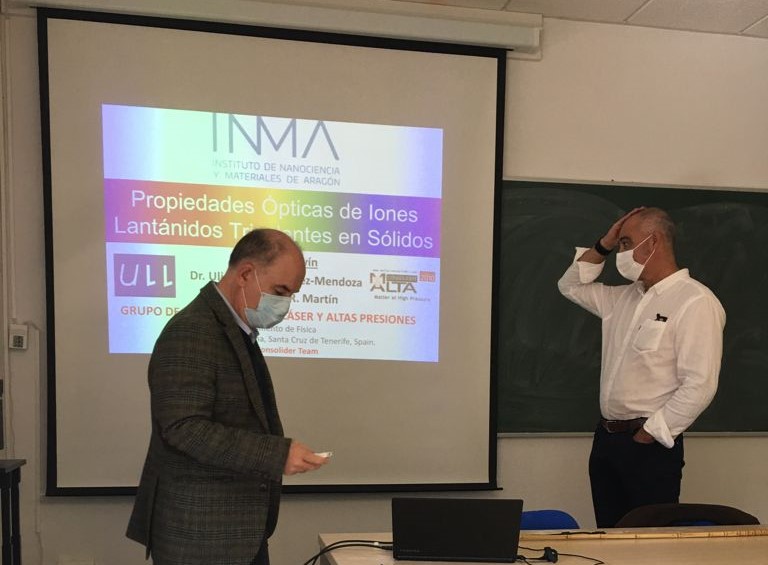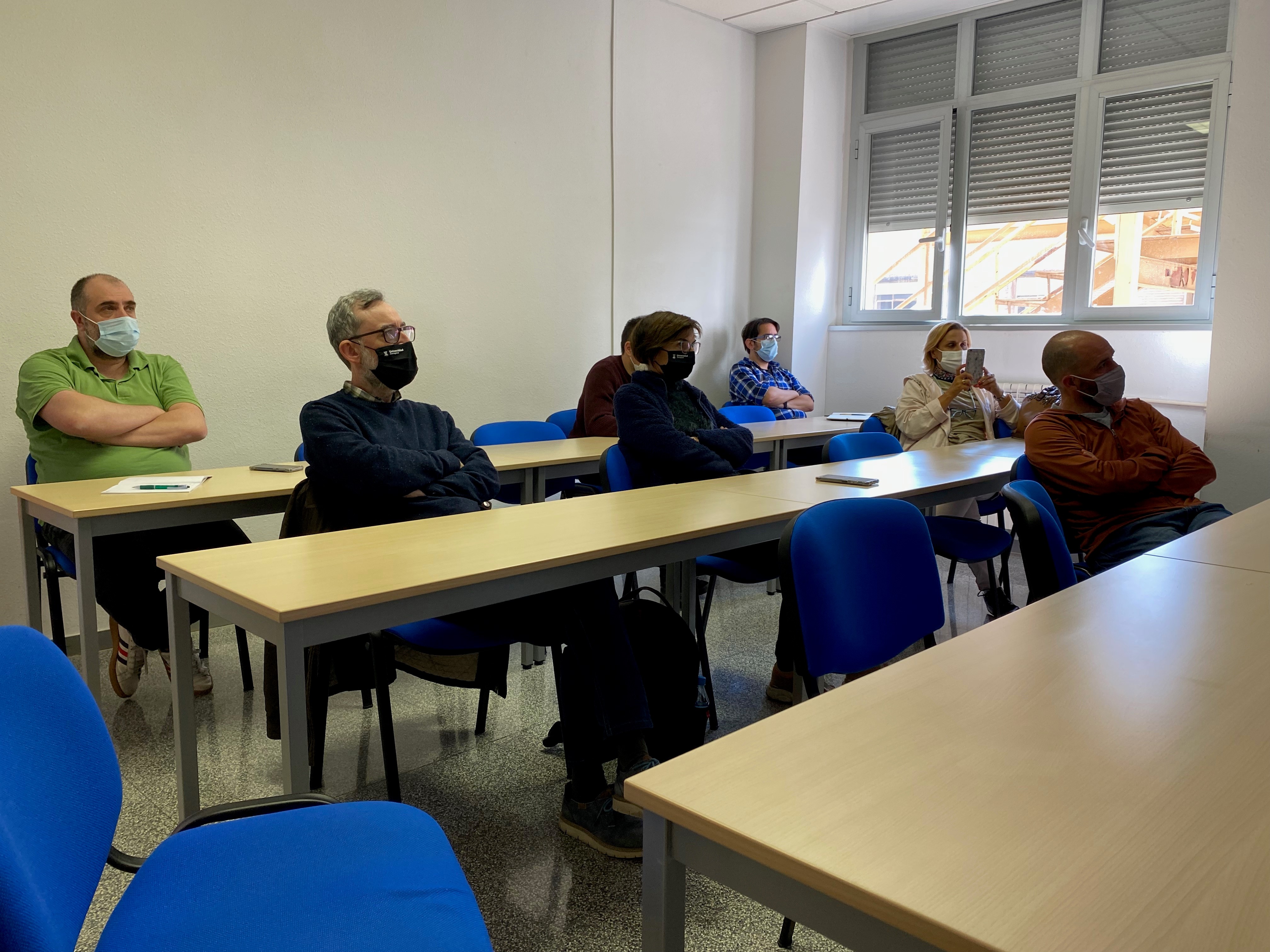
Conferencia sobre las Propiedades ópticas de Iones Lantánidos Trivalentes en Sólidos impartida por Victor Lavín, Catedrático de Física de la Universidad de La Laguna
On October the 28th, the INMA received the visit of Victor Lavín della Ventura, Professor of Physics at the University of La Laguna (Tenerife).
During his stay in Zaragoza Professor Victor Lavín gave a lecture on “Optical properties of trivalent lanthanide ions in solids” at the University of Zaragoza.
Optical Spectroscopy has been the main field for Atomic Physics testing since the start of the 20th century. Different models of atomic structure have been subjected to the strict test of numerous spectral data experimentally obtained. The knowledge of the interactions involved at atomic level and their effects in the electronic structure of energy levels and in the optical properties of different atoms and ions, has focused the spectroscopic work.
Lanthanides, associated with the filling of the 4f shell, bound together fourteen elements with very similar chemical properties from Cerium (Z=58) to Lutetium (Z=71). Neutral Lanthanides share Xe (Z=54) electronic configuration, plus two or tree more outer electrons (6s2 ó 5d 6s2) and the incomplete 4f electron shell, although usually work is with Lanthanide ions, dominating in particular the trivalents. Even though, well into the XX century, Becquerel had already observed spectroscopic properties in lanthanide Salts, the real interest for those ions optical transitions starts in the thirties and forties. At this time, Bethe and Kramers have already established the theoretical bases of spectral interpretation and intensities of the 4f intraconfigurational transitions of the lanthanide ions in aqueous solutions. After the Racah´s work in the forties, Stevens in the fifties and Judd and Wybourne in the sixties, it has been possible to develop a comprehensive mathematical formalism, named Racah Algebra, to describe the main interactions which coexists in multi electronic systems like the lanthanides. The incomplete 4f electron shells are unpaired, as a result these ions show paramagnetic properties and they interact with UV radiation, visible or IR. Besides, the so-call lanthanide contraction, that attracts electrons to the outermost shell, and the shielding these shells bring to the 4f electrons considerably reduce their interaction with the environment. This characteristic is refflected in many of its properties, some of them are analized in the optical spectroscopic framework.
In this talk are reviewed the research areas developed by the University of La Laguna laser Spectroscopy and Hight Pressures Group during the last 20 years. Among them, the most noteworthy are the local environment studies of the lanthanide ions in materials (crystals, glasses, glass-ceramic materials and nanomaterials), the energy transfer process among lanthanide ions, the visible light and infrared energy conversion, laser action or pressure and/or temperature sensors.


